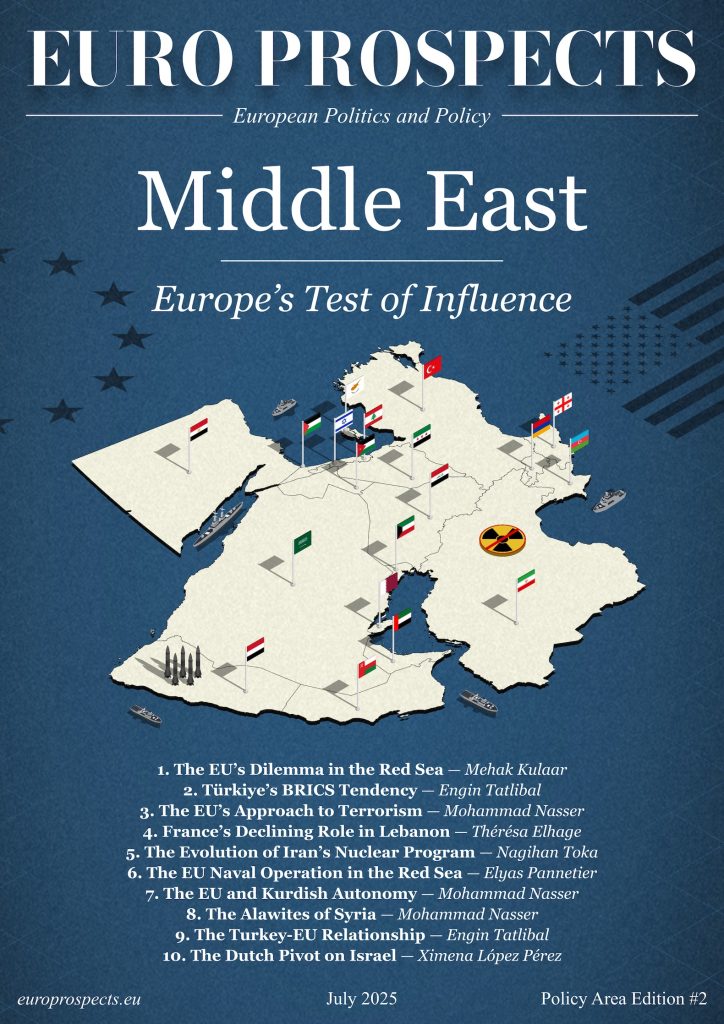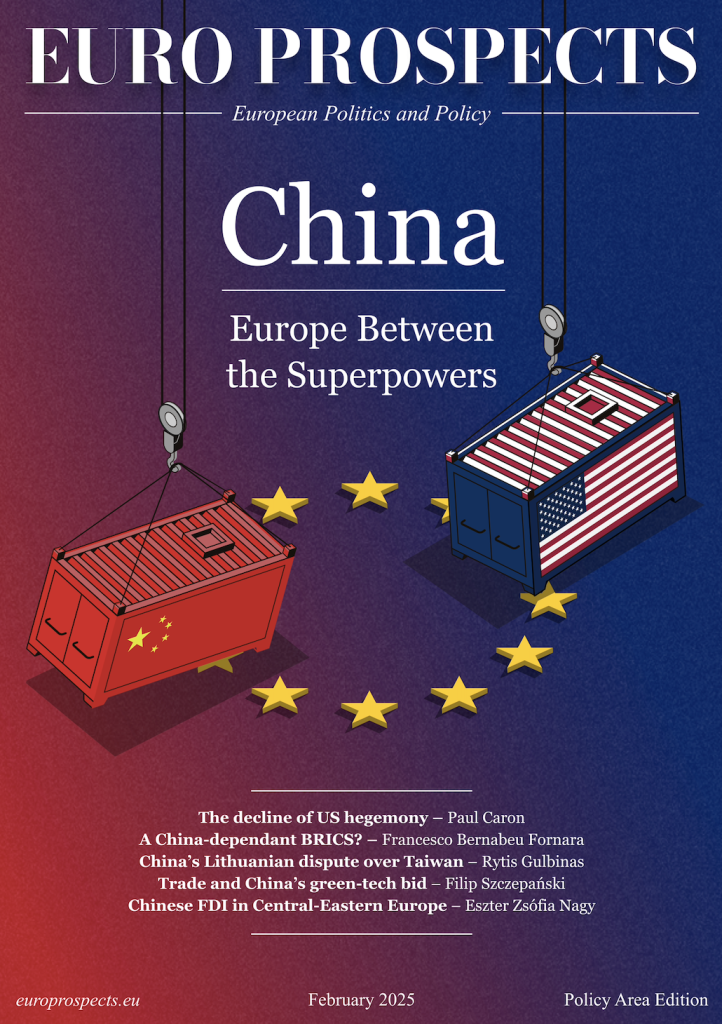
10 min read — Trade | ASEAN | EU | Geopolitics
EU and ASEAN Responses to the Trump Tariff Shock 2.0: Divergent Paths in a Shared Trade Storm

By Dr. Arsalan Ahmed — Economy Correspondent
Edited/Reviewed by: Nuno Dias Pereira
July 1, 2025 | 14:50
Given this context, it is essential to examine how each region is responding to the new wave of tariff escalation, the strategies they are adopting to mitigate its impact, and what their responses reveal about the political and economic structures guiding their trade policies. Understanding these reactions offers valuable insight into the resilience and adaptability of regional trade models in this new era.
With Donald Trump’s return to the U.S. presidency in 2025, the global trade landscape is once again facing renewed uncertainty and protectionist challenges. Trump’s second term began with the reintroduction of sweeping tariffs and an aggressive stance on reshaping America’s trade relations. Both the European Union (EU) and ASEAN, two powerful regional blocs, are now navigating these disruptions with distinct strategies.
Background: Trump’s Second Term and Renewed Tariff Action
Trump’s second presidency has continued the approach of his first: challenging multilateral trade frameworks, undermining the World Trade Organization (WTO), and imposing new tariffs. One of the first executive actions in early 2025 was the implementation of a universal 10% tariff on all imports, alongside expanded tariffs on Chinese tech products, EU automotive components, and other key strategic sectors.
These new tariffs have triggered a range of political and economic responses worldwide. While the EU has swiftly mobilized its legal and diplomatic mechanisms, ASEAN countries are quietly adapting to the evolving trade environment, seeking opportunities within the disruption.
The EU’s Response
Trade data highlights the EU’s significant global trade footprint and high exposure to external partners, providing essential context for understanding its swift response to renewed U.S. tariffs. According to Eurostat, intra-EU trade in 2024 stood at €4.0 trillion, reflecting the bloc’s deep internal integration. Meanwhile, trade with non-EU countries reached €2.5 trillion, indicating a robust external orientation. The EU exported €503.8 billion worth of goods to the U.S. and imported €347.2 billion, making the U.S. its largest single-country trading.) partner. Additionally, the EU maintains a substantial goods trade deficit with China. In 2024, it exported €213.3 billion in goods to China, while importing €517.8 billion, resulting in a deficit of approximately €304.5 billion. These stats underscore the bloc’s delicate and complex trade position. Such significant exposure to both Washington and Beijing amplifies the risks associated with rising protectionist sentiments.
In response to growing pressures from renewed U.S. tariffs, the EU has taken specific actions to protect its interests. It has lodged formal complaints with the WTO, imposed retaliatory tariffs on select U.S. products, and taken proactive steps to bolster its trade defenses. This included developing new trade instruments and forming strategic alliances with other affected economies to coordinate responses more effectively.
In parallel, the EU is accelerating trade diversification. It has prioritized talks with India, the Latin American bloc, and the Association of Southeast Asian Nations (ASEAN). The European Parliament has emphasized the need for trade resilience through strategic autonomy, particularly in critical supply chains such as those for semiconductors, electric vehicle (EV) batteries, and green technologies.
This dual-track approach — combining legal retaliation with long-term diversification — reflects the EU’s mix of legalism and strategic recalibration. Nonetheless, persistent intra-bloc tensions, Brexit aftershocks, and nationalist politics threaten the unity of this strategy, prompting debate over the EU’s capacity to maintain coherence in its trade policy without deeper institutional reform.
ASEAN’s Response
ASEAN’s trade figures reveal a different story from the EU’s more centralized model. In 2023, intra-regional tradeaccounted for 22% of ASEAN’s total trade. ASEAN’s total trade with China reached $468.8 billion, with a trade deficit of $97.6 billion. In 2024, U.S.–ASEAN goods trade totaled $476.8 billion, with ASEAN exporting $352.3 billion worth of goods to the U.S., resulting in a significant trade surplus for ASEAN. Among ASEAN countries, Vietnam was the largest exporter to the U.S., with exports valued at approximately $142.5 billion, primarily in electronics and textiles. Malaysia and Thailand followed, exporting $31.6 billion and $28.4 billion respectively, with key products including semiconductors and automotive parts. Indonesia’s exports reached $16.8 billion, driven mainly by rubber and minerals, while Singapore contributed $14.6 billion in pharmaceuticals. These countries have benefited from shifting global supply chains and increasing demand in critical industries, highlighting ASEAN’s important role in U.S. trade. Collectively, they represent the bulk of ASEAN’s $352 billion exports to the U.S. in 2024. These patterns illustrate how ASEAN economies are benefiting unevenly but substantially from the realignment of U.S.-China trade.
Unlike the EU, ASEAN, constrained by its intergovernmental structure, has not issued a bloc-wide response. However, member states such as Vietnam, Malaysia, and Indonesia are actively adjusting their trade and investment strategies. With new U.S. tariffs causing further shifts in supply chains, ASEAN countries are positioning themselves as alternative manufacturing hubs.
Singapore and Thailand are focusing on strengthening digital economy ties, particularly with the EU and Japan. The Regional Comprehensive Economic Partnership (RCEP) remains ASEAN’s key vehicle for regional integration. At the same time, exploratory talks are underway to deepen trade links with South Asia and Africa — efforts aimed at diversifying ASEAN’s trade dependencies.
Significantly, ASEAN’s 2025 leaders’ conference in Kuala Lumpur marked a turning point. Discussions focused on launching a digital single customs window, reinforcing supply chain coordination, and expanding intra-ASEAN trade facilitation. These initiatives indicate that ASEAN is transitioning from a loose coordination platform into a more proactive economic bloc capable of responding to global trade disruptions.
Comparative Insights and Learning Opportunities
The EU and ASEAN exhibit contrasting styles of trade governance, shaped by their respective histories, institutional designs, and regional dynamics. The EU, with its deeply integrated and long-standing supranational structure, can mobilize coordinated, rules-based responses grounded in legal mechanisms and collective action. ASEAN, being younger and structured as an intergovernmental association, emphasizes member flexibility, non-interference, and pragmatic consensus-building.
Since the first Trump tariff wave in 2018, ASEAN has steadily strengthened its internal cohesion and market-driven dynamics, enabling it to absorb shocks and seize opportunities quietly, but effectively. Over the past seven years, ASEAN has enhanced customs interoperability, introduced the ASEAN Single Window for digital trade clearance, and expedited the implementation of key trade agreements, including the Regional Comprehensive Economic Partnership (RCEP). It has also established sectoral working groups to enhance regional supply chain resilience, particularly in the electronics, agri-processing, and pharmaceutical sectors.
Member states have learned to leverage their comparative advantages: Vietnam has positioned itself as a hub for electronics and apparel exports, Malaysia has expanded its semiconductor production capacity, and Indonesia has moved up the value chain in mineral processing and green manufacturing. The adaptability shown by ASEAN economies, both individually and collectively, has helped the region attract foreign direct investment diverted from China during periods of heightened U.S.-China trade tensions. By quietly embedding reforms, reinforcing connectivity, and maintaining investor confidence, ASEAN has emerged as a credible alternative in global supply chains without relying on headline-grabbing confrontations or formal retaliatory measures.
Meanwhile, the EU continues to rely on defending multilateralism and legal frameworks, even as it confronts internal challenges to unity and reform. Disparities in trade exposure, industrial interests, and political priorities among member states complicate efforts to present a unified front in trade disputes. Despite these challenges, the EU has continued to pursue strategic autonomy, particularly in green technologies, digital services, and critical raw materials. Still, progress has often been slow due to institutional inertia and divergent national agendas. These internal frictions raise questions about the bloc’s agility in responding to external shocks, especially when compared to ASEAN’s bottom-up, market-responsive model.
However, each bloc has lessons to offer the other. ASEAN could benefit from the EU’s institutional strength and strategic autonomy frameworks, particularly in dispute resolution, centralized trade policy, and collective crisis coordination. Conversely, the EU might draw inspiration from ASEAN’s agile and low-cost responses, as well as its ability to capitalize on global supply chain realignments with fewer bureaucratic delays. ASEAN’s decentralized model has enabled member states to act swiftly on national priorities, allowing quicker adjustments to investor demand, trade flows, and production relocation.
Moreover, China’s continued rise as the next dominant economic actor gives ASEAN a strategic geographic and financial advantage, as firms seeking to de-risk China exposure increasingly shift to nearby ASEAN countries. ASEAN has not only absorbed trade realignments from firms moving out of China but has also deepened economic ties with Beijing. Through RCEP and bilateral engagements, countries such as Cambodia and Laos benefit from Chinese investment in infrastructure and logistics. At the same time, Vietnam and Thailand leverage partial decoupling from China to capture high-tech manufacturing segments. This dual approach, engaging China while diversifying beyond it, reflects ASEAN’s pragmatic balancing strategy.
The EU can draw valuable lessons from this. Rather than positioning itself purely in opposition to China, it might benefit from selectively engaging Beijing through strategic economic dialogues, while simultaneously reducing its overdependence in sensitive sectors like semiconductors and green technology. By combining strategic engagement with calibrated decoupling, the EU could emulate ASEAN’s flexible, interest-driven external policy, enhancing its global trade resilience.
ASEAN’s structural evolution, notably since the first Trump tariff wave in 2018, demonstrates a learning curve that the EU would do well to study. While Europe continues to defend the multilateral trade system, ASEAN has focused on quietly strengthening itself from within and now presents a cohesive, market-driven regional bloc well-positioned to absorb shocks and capture opportunities.
Conclusion: Facing Trump 2.0
The second Trump era has already begun reshaping global trade. For the EU, it is a test of multilateral commitment and internal coordination. For ASEAN, it is another external shock, one for which it appears increasingly prepared.
Both regions offer valuable lessons. The EU’s institutional strength can deliver cohesive, rule-based responses. ASEAN’s agile pragmatism allows it to seize opportunities quickly. In an era of rising protectionism, the future of trade resilience may lie in blending both models, combining strategic structure with operational flexibility.
Disclaimer: While Euro Prospects encourages open and free discourse, the opinions expressed in this article are those of the author(s) and do not necessarily reflect the official policy or views of Euro Prospects or its editorial board.
Write and publish your own article on Euro Prospects
Subscribe to our newsletter – stay informed when we publish articles on pressing European affairs.

